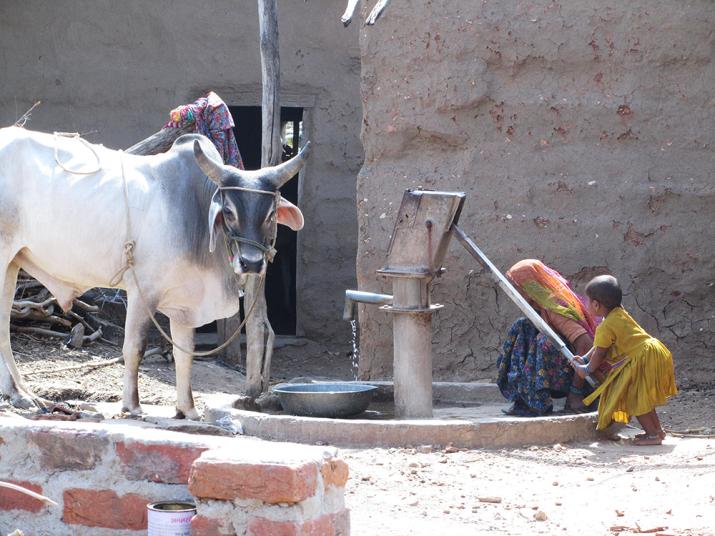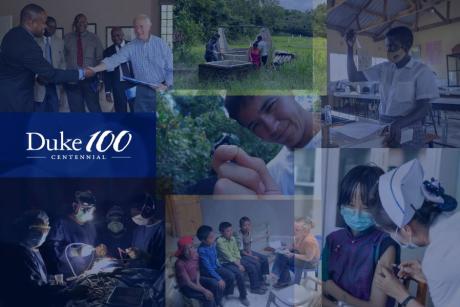By Maria Prebble
Originally posted on the Nicholas School Student Blog
“The children who have no clean water to drink, the women who fear for their safety, the young people who have no chance to receive a decent education have a right to better, and we have a responsibility to do better. All people have the right to safe drinking water, sanitation, shelter and basic services.”
—Ban Ki-moon, UN Secretary General
While the UN recognizes access to clean water as a human right, it is far from being universally realized, especially in India. Approximately 840 million people in India do not have access to safe and clean sanitation services. According to UNICEF, 594 million people—more than half of India’s population—defecate out in the open.
“Public water sources such as open wells, hand pumps and surface water are the main sources of drinking water in rural Indian villages, which can easily become contaminated between time of collection at the source and when it is consumed in the home,” said Alec Shannon, a second-year M.Sc. candidate in global health at the Duke Global Health Institute.
Alec is focusing on environmental health issues in rural Rajasthan communities for her master’s thesis. Over the summer, she conducted focus group sessions with men and women across eight different villages outside of the city of Udaipur, to collect information on current community environmental issues, including incidence of illness and knowledge and awareness of causes and treatment methods of common illness.
Many focus groups identified water shortage and scarcity, deforestation, open defecation and increasing amounts of garbage as the important environmental issues facing their community. Malaria, diarrheal illness and vomiting were the most common diseases reported, with occurrences rising during monsoon season.
“Most importantly,” said Alec, “I could see that many people understood that there is a link between open defecation, trash and poor water quality. For instance, people would talk of the rains washing over their waste and how it introduced microbes into the open wells and eventually made them sick.”
Another aspect of Alec’s project measured community demand for water treatment and sanitation improvements through a willingness-to-pay exercise. The exercise focused on community attitudes for three water quality improvement and sanitation technologies: ceramic filtration, chlorination of community water sources, and composting latrines.
“Most people were very happy to hear about the three available technologies,” Alec said. However, she admits that the composting latrine was not a popular idea with everyone, as “people were put off by the idea of a composting toilet because they thought it might smell, or they were uncomfortable with using their own waste as compost.” Alec explained that some people prefer to continue to practice open defecation, because it is what they know and accept.
India’s sanitation crisis is particularly dangerous for women. With no access to private toilets, many women wait until dark to relieve themselves in open fields, and are vulnerable to physical and sexual violence. In some Indian states, more than 90 percent of the assaults on women—including the horrific murder of two girls early this summer—take place when women and girls leave their homes to relieve themselves.
Improving access to clean and safe drinking water and sanitation services remains a top environmental health concern in many low- and middle- income countries. Indian Prime Minister Modi has promised to put “toilets over temples” in India’s development agenda, a promise that millions are waiting on for their health, dignity and safety.
To read Maria’s blog on her summer in India, click here.



